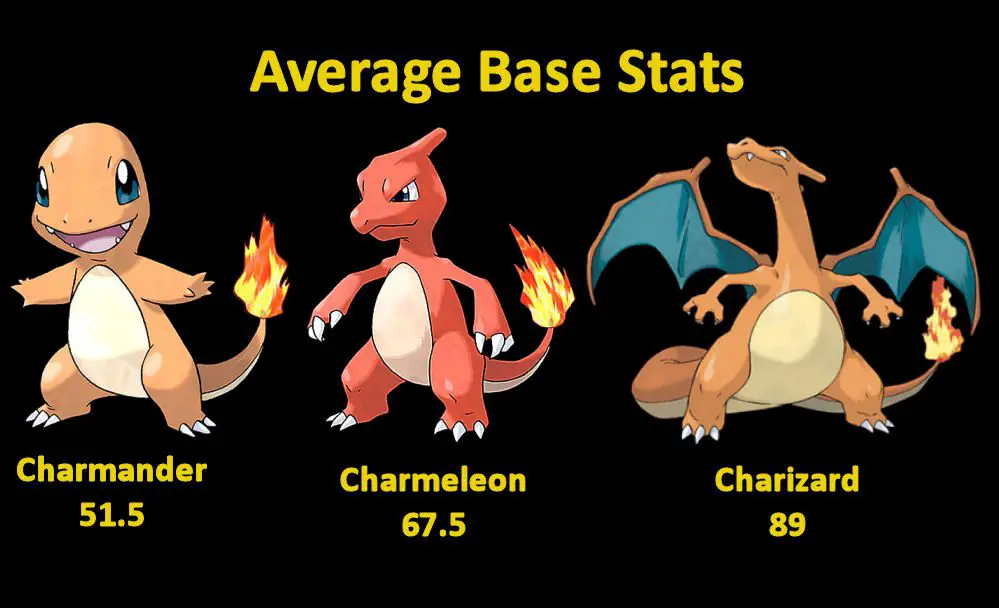Pokémon Base Stats Explained
The term base stats is often very confusing for those new to Pokémon. This is largely because the term can refer to the relative overall strength of a Pokémon or it can refer to effort values, the points won through battle or gained by using certain items. The confusion arises because the official term Species Strength is often referred to as base stats by Pokémon fans. Similarly the official term Base Stats is generally referred to as Effort Values (EVs)
The article below explains the meaning of Pokémon Base Stats when it refers to Species Strengths and when it refers to Effort Values.
Base Stats / Species Strengths
Here, Base Stats are the metrics that are used to determine the strength of a Pokémon character. Average Pokémon base stats range from 1 to 255 with the higher value being more likely to win a battle. Knowledge of the Base Stats enables you to compare the relative strength of different Pokémon.
Unevolved basic level Pokémon have a lower base stat than their evolved level 1 or level 2 characters. As an example, Charmander, which is a basic level Pokémon, has a base stat of 51.5. Charmeleon, which evolves from Charmander has a base stat of 67.5 and the fully evolved Charizard’s figure is 89.

Legendary Pokémon that do not evolve generally have high Pokémon base stats. Mewtwo’s base stat is an impressive 118.
The factors that are computed to calculate the Pokémon base stats vary depending on what generation that Pokémon is.
Generation I
In the Generation I era, all Pokémon had a number score for Hit Points (HP), Attack, Defense, Speed and Special Move. These are known as Individual Values (IVs). Their base stat / species strength is calculated by adding these IVs together and then finding the average by dividing by 5.
Generations II – Present
From Generation II onwards, Special Move was replaced by a Special Attack and Special Defense, both of which have their own values. This gives 6 individual values rather than the previous 5. These are added together and divided by 6 to determine base stat.
Generation I Pokémon that appear in subsequent generations have a different base stat to their original value. For example, Bulbasaur’s base stat in Generation I is 50.6 but in later generations it is 53.
It is helpful to know the average base stat individual values of a Pokémon. By knowing the average base stats a player will know if his chosen character is above or below average for a particular individual value.
Average Individual base stats:
Hit Points – 68
Attack – 75
Defense – 73
Speed – 66
Special Attack – 69
Special Defense – 69
(source – Pokémon Fandom)

The Base stats for Charizard show that it is above average for all individual values.
Base Stats / Effort Values
These are called Base Points in Japan and Base Stats in English but referred to as Effort Values (EVs) by fans of the game.
Effort values are a feature of Pokémon Games. In the first and second generation games a defeated Pokémon’s base stats / species strength was converted to effort points and then added to the effort value.
In the main Pokémon games from Generation III onwards defeated Pokémon give up a determined number of effort points to a particular individual value. Pokémon can earn up to a maximum of 510 effort points. Effort points are divided by 4 and then added to an individual value. 252 Effort points will take an individual value to its maximum level.
Why are Pokémon Base Stats important?
Base stats / strength values are used to calculate the individual values – HP, Attack, Defense, Speed, Special Attack and Special Defense of a Pokémon dependant on its level. Higher values mean that Pokémon is more likely to be victorious in battle, whereas lower values are easier to defeat. When a Pokémon’s HP reaches 0 it will faint and is defeated.
Individual values at each level are calculated by inputting values into formulae.
HP is caluclaed using the formula:
( (IV + 2 * BaseStat + (EV/4) ) * Level/100 ) + 10 + Level
Attack, Defense, Speed, Special Attack and Special Defense are all calculated using the formula:
(((IV + 2 * BaseStat + (EV/4) ) * Level/100 ) + 5) * Nature Value
formulae source – Serebii.net









